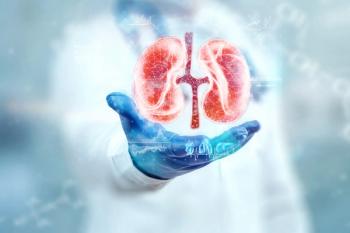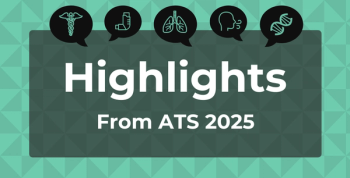
Guidelines, Treatments, Testing Advancements in Narcolepsy, Idiopathic Hypersomnia
A symposium held at the SLEEP 2024 Annual Meeting discussed updates in narcolepsy and idiopathic hypersomnia treatment, specifically in guidelines for treatment and testing in this population.
At a symposium held at the SLEEP 2024 Annual Meeting in Houston, Texas, multiple experts discussed new and exciting advancements in the treatment, testing, and guidelines around idiopathic hypersomnia (IH) and narcolepsy. The symposium was standing room only, with attendees packing the Grand Ballroom for one of the first sessions of the day.
Guidelines in Narcolepsy in IH Receive Update
Kiran Maski, MD, MPH, associate professor of neurology at Harvard University, started the symposium by going over the biggest updates in protocol for pediatric patients with narcolepsy types 1 and 2 and IH who are undergoing either polysomnography (PSG) or the multiple sleep latency test (MSLT).
The recommended protocols for MSLT and maintenance of wakefulness test (MWT) in children had been updated by the American Academy of Sleep Medicine (AASM) in April of this year. These guidelines were coauthored by Maski herself. The reason for these updates, she said, is because narcolepsy and IH often present themselves at younger ages.
“The prevalence of narcolepsy type 1 is about 14 per 100,000. But based on registries and self-reports, 65.7% of patients report that their symptoms began before age 18,” said Maski. The prevalence rates of narcolepsy type 2 and IH, in comparison, are relatively unknown but symptoms typically begin in adolescence to early 20s, which is why the guidelines are important.
The recommended protocols for the MSLT used the recommendations from the CDC and AASM on target sleep time for populations and used that to inform the timing of the test. “The new pediatric recommendations really finalized the need for adequate sleep duration, both before you come in for the PSG-MSLT as well as that the PSG tries to obtain a normative amount of sleep for age,” said Maski.
In terms of assessments, prior sleep logs, and actigraphy, those are recommended in the same way as the adult criteria. However, the language of the protocols also allows for validated sleep tracking devices, which could allow for other types of monitoring. It is now recommended that electronic devices also be turned off 30 minutes before lights out, which will help with capturing the correct values for the PSG. The PSG will also now need a minimum of 7 hours of sleep with 8 hours in bed.
“That’s not a huge change from the adult representation where the minimum is 6 hours,” said Maski. “But it represents an attempt to really try to capture more sleep duration on the [PSG].”
Parents and caregivers can have shared decision-making when it comes to staying in the same room as their child during the test and all clinical information should be reported. The protocol also included guidance on what kind of data to include in the MSLT report, which include habitual sleep time, medications, having the patient complete a sleep survey, and whether a protocol deviation occurred. The protocol lastly focused on guidelines to use for children with intellectual disabilities.
Limitations of PSG-MSLT and Different Tests to Consider
Maski concluded her talk by pointing out that MSLT had some notable limitations in the way it evaluates sleep.
“Fundamentally, the problem is that a lot of these conditions under the central disorders of hypersomnolence really merge all together,” she said. “So [IH] and long sleep duration are oftentimes very difficult to disentangle.”
This can result in low validity and low reliability when testing for narcolepsy type 2 and IH, as they often have similar attributes and characteristics. The MSLT can have an accuracy of only 34% when testing for the daytime sleepiness variable in IH.
David T. Plante, MD, PhD, from the University of Wisconsin-Madison, agreed that the MSLT had major limitations during his presentation on the topic. Daytime sleepiness is an experience that many people share.
“Can I see a show of hands of people who felt sleepy during the course of this conference?” Plante asked the crowded room. After more than half the room showed their hands, Plante joked, “So that’s pretty much everybody and those of you [who didn’t raise your hand], I’m assuming you’re asleep.”
Sleepiness can be measured in a couple of different ways, primarily with the Epworth Sleepiness Scale as the subjective scale and the MSLT as the objective scale. The MSLT measures how quickly someone falls asleep and how long it takes for them to get into rapid eye movement (REM) sleep. However, retest accuracy is quite low, at less than 50% for IH diagnosis.
“I think this is generally appreciated in the field that the MSLT is a good test for confirming a diagnosis of suspected type 1 narcolepsy,” said Plante. “Once you get outside of [narcolepsy type 1], then it’s much more of a wildcard.”
Hypersomnolence, he said, is multifaceted and many things need to be considered when looking for a good way to test for a diagnosis, including ability to stay awake, excessive sleep duration, and drowsiness. So how should all of these things, primarily long sleep duration, be tested?
Plante highlighted 3 protocols developed in Europe—the Paris protocol, the Bologna protocol, and the Montpellier protocol—that take 48, 60, and up to 80 hours to complete, respectively. They otherwise operate similarly to regular PSG testing, where naps are offered and sleep is monitored for a longer length of time.
“A lot of patients aren’t going to be able to even tolerate being in the lab for that amount of time,” said Plante. “People have lives, things to do, and they don’t want to spend that much time at the same center. So actigraphy comes up quite frequently.”
Actigraphy for IH can be done at home and can identify long sleep duration in these patients. However, actigraphy is not always available and reimbursed. Plante also noted that sensitivity ratings could also change the time to sleep by about 25 to 30 minutes when adjusted, which could affect the results. He suggested that standardization of which settings to use is key in future testing.
Plante also suggested that Psychomotor Vigilance Task testing could be used to measure sleep deprivation, as it is easy to perform, reliable, minimally affected by aptitude, and sensitive to sleep loss. Last, he also highlighted infrared pupillometry, which can use the diameter of the pupil to determine fatigue waves.
“What we need to start doing is validating these [tests] before finding ways to get them accepted but also applied in the field,” said Plante. “Because that’s one of the challenges. We may make all of these different tool paths but if they can’t get out to general practice, it’s very hard with these things.”
Treatment Methods for IH and Narcolepsy
Lucie Barateau, MD, PhD, of Centre Hospitalier Universitaire de Montpellier, concluded the session by giving updates on narcolepsy and IH treatments. “When I had to prepare the talk, I realized that maybe it was not a gift,” Barateu joked. “Because we could talk about this topic for a whole day and I only have 20 minutes.”
Barateau decided to focus on developments within the last 4 years and randomized clinical trials that have come through in that time with new developments in the treatment of narcolepsy types 1 and 2 and IH. Sodium oxybate, she noted, has been used effectively in the United States for narcolepsy type 1.
“This new formulation of sodium oxybate has been developed and you have 1 with less sodium and 1 which is a longer-acting form of sodium oxybate,” she said.
She then showed the results of previous studies testing the efficacy of these medications. According to a study published in Sleep in 2021,1 lower sodium oxybate was a good strategy in adults with narcolepsy with cataplexy. A separate study2 published in Sleep in 2022 found efficacy in giving patients once nightly sodium oxybate. However, Barateau noted that there could be a more effective way of targeting narcolepsy and IH.
“[Narcolepsy type 1] is due to orexin deficiency. So if we have some therapy with orexin, then we can target [excessive daytime sleepiness], cataplexy, and all other symptoms related to a deficiency. That would be great,” she said. Orexin could not be given orally in the past due to not being able to cross the blood brain barrier, but nonpeptide Orexin receptor-2 agonists could be coming soon for these patients.
Studies conducted on humans3,4 found that those who received orexin receptors through an IV had an improvement in narcolepsy type 1 and 2 symptoms of sleepiness. A randomized, phase 2, placebo-controlled trial of TAK-994 published in the New England Journal of Medicine5 in 2023 needed to be terminated due to a hepatic adverse event but had interesting results prior to the termination. This included an improvement in average sleep latency of 23.9 minutes in those taking 30 mg twice a day, 27.4 minutes in those taking 90 mg twice a day, and 32.6 minutes in those taking 180 mg twice a day compared with no improvement in the placebo group.
Barateau said that results like this were big for the field, as they could introduce a new treatment method for patients with IH and hypersomnia. There are studies currently being conducted to assess the safety and efficacy of other orexin receptor agonists to find medications that can work just as well as the TAK-994 inhibitor but without the adverse events.
Treatment and guidelines for testing for narcolepsy and IH are constantly changing and improving to give patients better options for treating their central nervous system condition, the speakers agreed. Whether it is IH or narcolepsy, new treatment methods are being introduced and can fundamentally alter the ways in which narcolepsy and IH are addressed.
References
- Bogan RK, Thorpy MJ, Dauvilliers Y, et al. Efficacy and safety of calcium, magnesium, potassium, and sodium oxybates (lower-sodium oxybate [LXB]; JZP-258) in a placebo-controlled, double-blind, randomized withdrawal study in adults with narcolepsy with cataplexy. Sleep. 2021;44(3):zsaa206. doi:10.1093/sleep/zsaa206
- Kushida CA, Shapiro CM, Roth T, et al. Once-nightly sodium oxybate (FT218) demonstrated improvement of symptoms in a phase 3 randomized clinical trial in patients with narcolepsy. Sleep. 2022;45(6):zsab200. doi:10.1093/sleep/zsab200
- Evans R, Kimura H, Alexander R, et al. Orexin 2 receptor-selective agonist danavorexton improves narcolepsy phenotype in a mouse model and in human patients. Proc Natl Acad Sci USA. 2022;119(35):e2207531119
- Mishima K, Fujiki N, Yoshida Y, et al. Hypocretin receptor expression in canine and murine narcolepsy models and in hypocretin-ligand deficient human narcolepsy. Sleep. 2008;31(8):1119-1126.
- Dauvilliers Y, Mignot E, Del Río Villegas R, et al. Oral orexin receptor 2 agonist in narcolepsy type 1. N Engl J Med. 2023;389(4):309-321. doi:10.1056/NEJMoa2301940
Newsletter
Stay ahead of policy, cost, and value—subscribe to AJMC for expert insights at the intersection of clinical care and health economics.








































